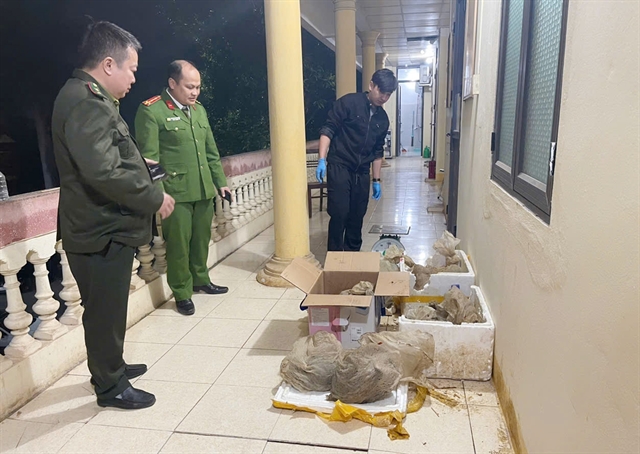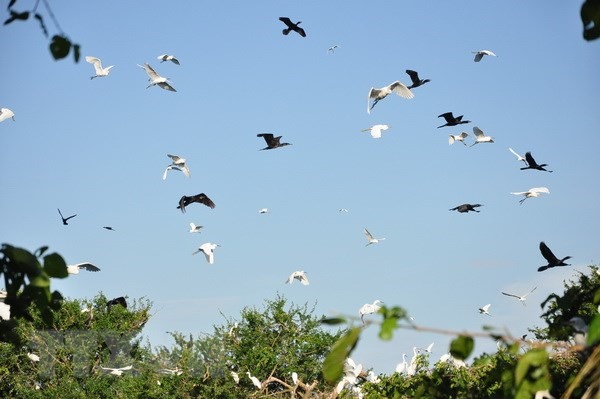 Environment
Environment

The population of storks as well as many other kinds of birds in a special park in the
 |
| The stork population in a park in northern Bắc Giang Province has decreased sharply over the past months. — VNA/VNS Illustrative Photo Ánh Tuyết |
BẮC GIANG — The population of storks as well as many other kinds of birds in a special park in the
The Đào Mỹ garden located in Lạng Giang District, with an area of over 3ha covered by perennial eucalyptus forest, has been home to more than 15,000 storks and many other bird species for over 30 years. This site has become a popular tourist attraction and valuable research location.
The number of storks has decreased markedly to only about 3,000 by the end of May, Quyền, said.
He added that some rare species, such as cormorants, herons, pelicans and cranes, have even completely disappeared.
The decline is due to illegal firecracker explosions in the area during the Tết (Lunar New Year) holiday in February, leaving the storks panicked.
In addition, the eucalyptus forest, or the stork habitat, is badly affected after many years of storks swarming the trees. The forest is covered with dung and thick fallen leaves. The smell of dung makes the storks move to the surrounding buffer zones where farmers grow fruit trees. Here, without any protection, the storks are within hunters’ reach.
To solve the problem, Quyền tried to plant wild pineapple trees and some thorny plants. Authorities of Lạng Giang District have issued a prohibition on hunting. However, these efforts are ineffective.
The authorities must take drastic action, strictly prohibiting firecracker explosions and illegal bird hunting, along with strictly punishing violations, Quyền said.
“The long-term solution to improve the stork habitat is crop rotation, starting with the planting of trees in the outer area for the storks to make nests, then replanting dead trees,” he said.
According to Chairman of the Đào Mỹ Commune People’s Committee Ngô Văn Tuấn, the commune aims to build the Đào Mỹ stork garden into an ecological tourist area in the coming time, not only to protect the storks but also to contribute to local tourism and economic development. — VNS



